Why do you need a ceiling anchor and how is it installed?
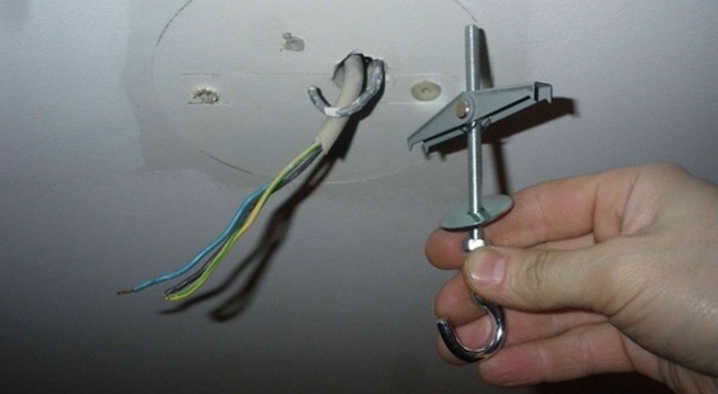
As you know, fastening of indoor structures is carried out on vertical surfaces, that is, walls. Less often, but all the same, it is necessary to install structures on ceiling surfaces, for example, chandeliers, hanging chairs, ropes in a set of sports wall bars, etc. In these cases, a ceiling anchor is used.
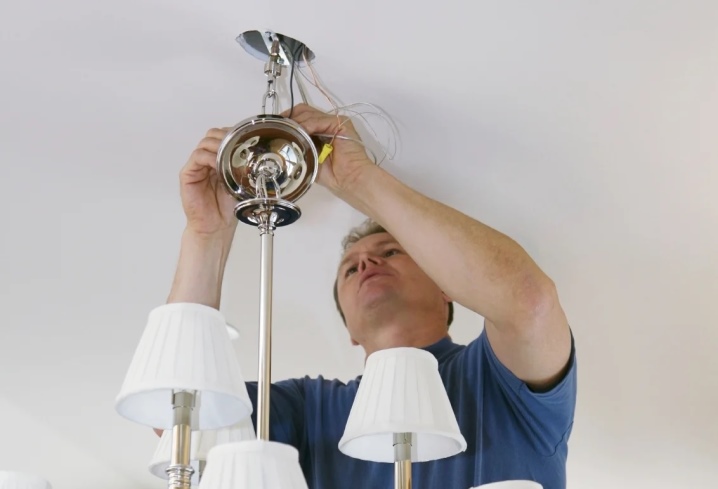
Peculiarities
The peculiarity of ceiling anchors is that their purpose is to withstand power loads after assembling structures on ceilings. For their manufacture, a special technology is used, which is different from others used for the manufacture of anchors and dowels of a different type. The task of fasteners of this type includes not only a reliable connection of the structure with the main surface, but also a strong fixation of the mounted object.

In the technological process of manufacturing the ceiling anchor, high-precision equipment is involved, the material is galvanized stainless steel, with the obligatory galvanization of all elements.
The action of the anchor is the wedging of the sleeve under mechanical load under the weight of the attached structure.

Varieties and overview of models
Ceiling anchors come in several varieties, differing in the type of application for different mounted items.
- Ceiling wedge anchor. Used for the installation of structures in a solid base, such as concrete floors, brick and stone base. A feature of this type of anchors is a complete replacement of welding, since they are guaranteed to give a high-strength connection and visually look more attractive. It is in demand when installing metal sheet material, rails and iron corners. Consists of a metal wedge with a thickening at the end and a bushing with a groove for fixing.
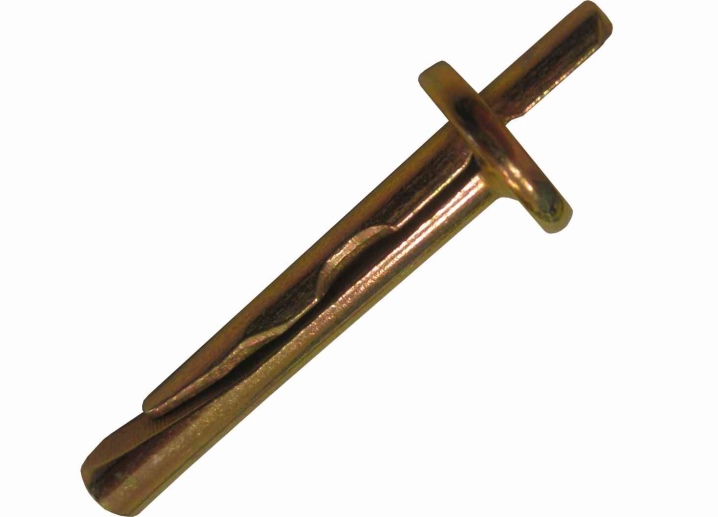
- Ceiling anchor with eyelet is used for hanging heavy chandeliers, used when installing a suspended or stretch ceiling. Just like the wedge anchor, it is used for concrete, brick and stone foundations. The standard lug size is 6.3 mm. The suspension element is threaded into the eyelet, which makes it extremely convenient to work with this type of installation.

- Anchor bolt with hook, ring or crutch it is used for the installation of heavy suspended objects, if their subsequent removal is meant. The design includes: a spacer, a metric threaded stud, an open hook or ring. Easy to install, no special skills required.

- The crutch anchor is used for hanging objectswhere the crutch acts as a hook, such as a water heater. The profile ceiling hanger is needed to connect the ceiling profiles. Its versatility makes it indispensable for working with various types of profile materials: wall panels, drywall, etc. Additional elements may be required in the work. This is a ceiling profile extension, suspension rod, connector.

- Straight hanger made of perforated steel plates increased strength. Perforation is made to bend the ends of the plates down. The central part of the suspension has holes for fastening to the ceiling base with anchor dowels. Manufacturing material - galvanized steel. With a length of 36 cm, the suspension is 3 mm thick, 30 mm wide, and weighs 100 g.
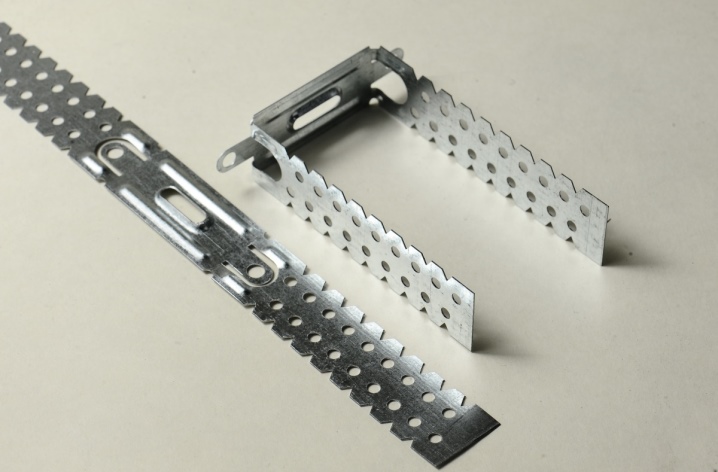
- Ceiling adjustable suspension anchor profile 60x27, 6x60 mm, 6x40 mm is used in cases where the length of the direct suspension is not enough.This type of suspension allows you to lower the ceiling to a distance from the main one to 1.2 meters. The constructive solution provides for the presence of upper and lower links with hooks at the ends.
A simple hook with a metric thread at the end allows you to hang a chandelier weighing up to 10 kg.
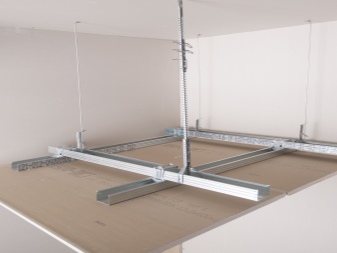

Hammer-in anchors with a metal dowel are used when hanging chandeliers, lamps or other heavy structures weighing 30 kilograms or more to concrete floors. The anchoring surface has a diagonal cut and an internal metric thread up to half the length, the other half has four petals. The M8 drop-in anchor is capable of withstanding a maximum load of up to 1350 kilograms.
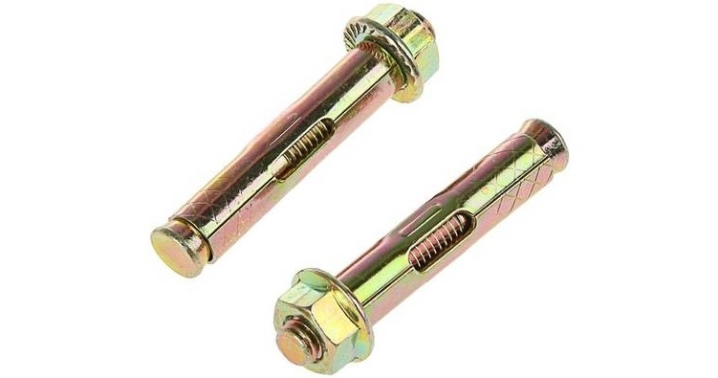
Where is it used?
Fasteners in the form of ceiling anchors are used in the construction of houses, in the interior decoration of premises, during the connection of communications - electrical wiring, cables, air ducts and pipelines, plumbing structures. Installation of heating systems also requires ceiling anchors - anchor hook. Internal renovations are rarely complete without this type of fastener.
All suspended structures require ceiling anchors for installation.

They are necessary for a false ceiling, for the installation of chandeliers and lamps, especially if these are devices that illuminate large spaces. Multi-storey mansions with a through atrium on all floors require special fasteners in the form of brackets for chandeliers weighing hundreds of kilograms. The same applies to high-profile institutions - in theater halls, halls, administrative and office buildings with high ceilings, heavy lamps weighing hundreds of kilograms are suspended.
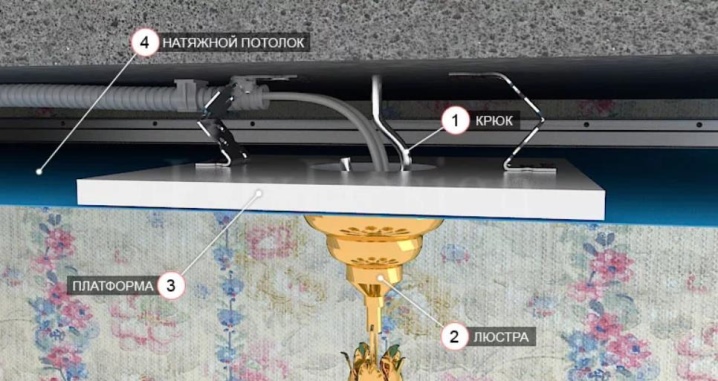
Hardware of this type is used only in dense materials: concrete, reinforced concrete, brick, stone.
In addition to the above suspension systems of cassette, rack and pinion and plasterboard type are mounted with ceiling fasteners. You cannot do without them when fixing rigging, chains and cables, if they are in a suspended state. Household hanging appliances are fixed with ceiling hardware. These are air conditioners, ovens and ovens, fire safety sprinkler systems. In sports halls, ceiling anchors of special reinforced structures are used for mounting pear and rope into the ceiling.

How to install?
To hang a lightweight chandelier weighing up to 10 kg from a wooden ceiling, it is enough to screw in a bolt with a hook and a thread at the end. The range of such hooks offers various diameters with the design weight of the structure - a rod diameter of 2 mm will hold a lamp weighing up to 3 kg, 3 mm - 5 kg, 4 mm - 8 kg, 5 mm - 10 kg, respectively. If the ceiling is a concrete slab, then first you need to prepare a hole, insert a dowel, then screw in the hook.
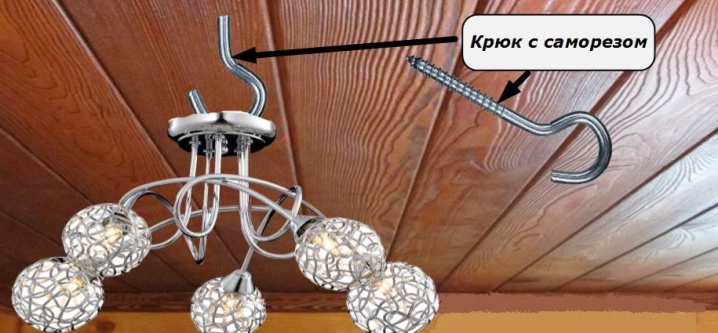
For installation of suspended ceilings of the Armstrong system, direct and adjustable suspensions are used. To fix the entire suspension system to be strong, the master mounts the elements to the base in the central part on anchor dowels, using two or more elements on each suspension.

With particularly high main ceilings, the suspension system is lowered much lower than the possible length of straight suspensions. In this case, adjustable elements with rods and a clamping structure are used. Installation algorithm: the upper link is fixed on the main floor, and the lower one is connected to the supporting frame of the false ceiling system. Sometimes the center plate is compressed, and this gives the effect of free travel of the rods. In this way, the desired distance of the suspended ceiling from the main one is achieved. After the height is adjusted, the plate is unclamped, and a firm fixation occurs.

Ceiling brackets are used to mount and attach a sports equipment (bag, rope) or TV, hanging chair and other heavy structures. Such fasteners have several holes, usually four, but there may be more.The metal plate on which the mounted ring is located is bolted to the ceiling, securely fixed, then the suspended structure is hooked to the ring. To obtain a reliable fixation, you must follow the correct procedure.

The place of installation of the bracket is outlined, marks are put in the places for the dowels. Then the marked places are drilled out and the anchor bolts are screwed in. The size of the socket must be exactly the same as the diameter and length of the ceiling anchor in order for it to sit firmly in the base. The finished hole is blown to remove dust and debris.
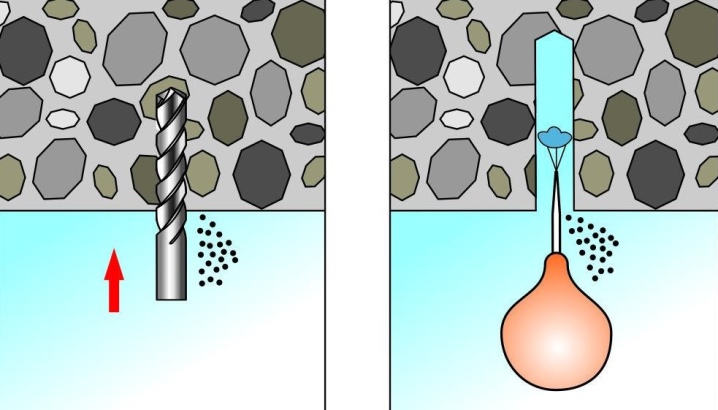
After that, the element is fixed in the way it is provided by its design - by screwing in, turning, additional hammering to open the petals. From the tools you will need a drill or screwdriver, a hammer and, possibly, a hammer drill if the ceiling is too strong for a drill.
It must be remembered that the anchor cannot be disassembled, it is inserted as assembled in production.

A similar type of fastener is used on solid, corpulent materials: brick, stone, concrete, we are not talking about porous bases for ceiling anchors, since they will not withstand the weight of heavy structures. The load on the anchor is determined by the type of material that will serve as the basis for the fastener. The load on the popular size 6x60 anchor should not exceed 6 kN.
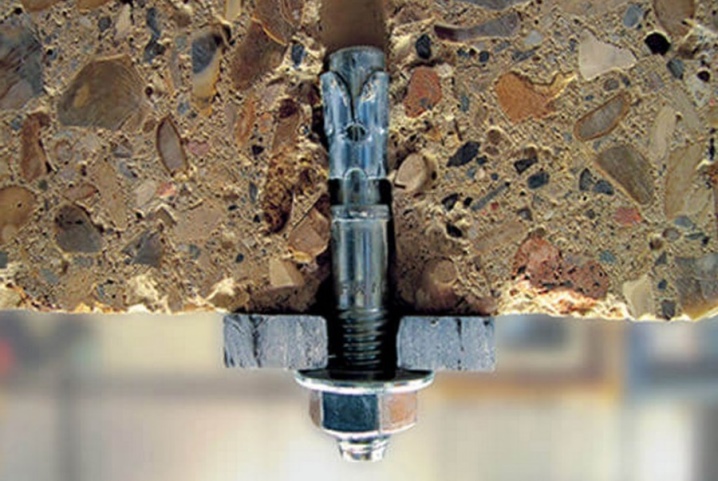
You can find out even more useful information about anchors in the next video.













The comment was sent successfully.